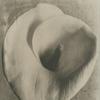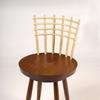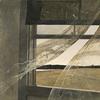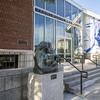The International Museum of World War II Commemorates Casablanca With 75th Anniversary Exhibition
- BOSTON, Massachusetts
- /
- July 28, 2017
A special exhibition at The International Museum of World War II in Boston will open November 8, 2017, 75 years to the day when America entered World War II, dispatching its own soldiers to North Africa to join its Allies in fighting the Germans. The Real and Reel Casablanca; American Troops Enter World War II, Landing in North Africa will feature 75 artifacts drawn from the Museum’s extensive collection that provide unmatched insights into the decisions surrounding the invasion at Casablanca, Morocco, and the atmosphere in the U.S. Where in the world was Casablanca?, wondered many anxious Americans. They were about to find out, both the real and the Hollywood versions.
This level of commitment, actual boots on the ground, was as stunning as it was sobering to the entire country. Officially called “Operation Torch,” the invasion was controversial and its consequences were far reaching both on the battle fronts and the home fronts, in America and throughout the world.
Drawing on its collection of more than 500,000 original artifacts, letters and documents, The International Museum of World War II presents the human side of this complex operation. Exhibition highlights include:
- General Dwight Eisenhower’s decoded message to enter the war: PLAY BALL – On November 8, 1942, General Dwight Eisenhower, Supreme Commander, Allied Expeditionary Force, and Commander of Operation Torch sent a message to Major General George S. Patton, Commander of the Western Task Force, who was on a command ship off the coast of Casablanca awaiting the coded message to attack. When the decoded message from Eisenhower, “PLAY BALL,” arrived, the American Army entered World War II.
- Patton’s invasion map of Casablanca – The map is heavily annotated and marked up by General Patton who commanded the Western Task Force at Casablanca.
- Patton’s retained copy of his message to the Sultan of Morocco – Patton warns “that if the French armed forces continue to demonstrate the hostility they have already shown, it is my military duty and purpose to attack by air, by sea, and by land, with the utmost violence known to modern war.”
- Ornamental daggers – The Sultan of Morocco presented ornamental daggers to General Patton after the American Troops landed in Casablanca.
- Letters from Eisenhower to his wife – General Eisenhower describes the American invasion in Casablanca and the American defeat against German commander Erwin Rommel at Kasserine Pass.
- Letters from Erwin Rommel, the German commander (called the “Desert Fox”) to his wife – Rommel describes the difficulties he was facing against the American forces.
- German Afrika Corps photo albums – The photo albums show everyday life for the Germans in North Africa.
- Casablanca, the movie artifacts – Coincidentally, the movie Casablanca, starring Humphrey Bogart and Ingrid Bergman, came out at the same time as the American invasion. It was instantly popular because the real Casablanca was in the news every day. Movie goers thought they were getting an idea of what was going on. Visitors to the Museum can see posters for the movie, a chair from Rick’s Café, and Bogart’s handwritten chess moves for the movie chess game.
- The official Casablanca photograph – Two months after the invasion, in January 1943, U.S. President Franklin D. Roosevelt, U.K. Prime Minister Winston Churchill and their military staffs met in Casablanca to make crucial decisions about the conduct of the war. Their most important decision dictated that there could be only unconditional surrender of Germany and Japan. The large official photograph of the leaders meeting in Casablanca is signed by every one of them.
Also on display are artifacts from the home front, including poet Robert Frost’s ration book. After Pearl Harbor, recruitment stepped up, rationing began, and factories began converting to war-time production. There is evidence of all of this as context for the tenor of the country on November 8, 1942, the day America entered the war.
Operation Torch was one of only two direct orders given by President Roosevelt, overriding his military commanders. After Pearl Harbor, the President, at the urging of Churchill, decided that American forces would focus on defeating Nazi Germany first, and Japan later. How to do this, and in what order, was a matter of great controversy at the time. On view through February 3, 2018, America Enters World War II provides perspective into the atmosphere abroad and at home, and showcases how today we have the advantage of hindsight on the crucial decisions made at the time, a luxury that military commanders, and citizens, never do.
About The International Museum of World War II
The International Museum of World War II (formerly The Museum of World War II), a nonprofit museum located west of downtown Boston, is the most comprehensive in the world. Its unrivaled collection is unique in that it covers the entire world at war, all the countries, the cultures, the home fronts and battlefronts, the ordinary soldiers, leaders and those caught up in the dislocations of war. There are more than 7,500 artifacts on display, including many of the iconic documents and artifacts for which the Museum is well-known, and more than 500,000 pieces in its research archives. The mission of the Museum is to educate about the causes and consequences of war and that war is personal and complex. For visitors, students and researchers, the Museum is relevant to today’s events. For more information, please visit www.imwwii.org.












